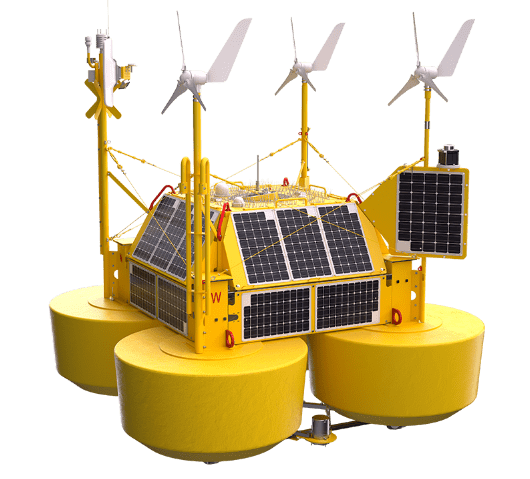The industry standard for Wave measurements is to use a buoy moored freely in the ocean transmitting data to shore or a nearby platform. This method has operational limitations that, in many cases, require other solutions.
Several other solutions based on down-looking radars or lasers exist for offshore use and work reliably, depending upon location. Also, systems based on using horizontally looking radars, even standard X-band ship radars, have been used, as well as up-looking ADCPs and pressure sensors.
WISE AIM Wave Buoy Sensor
The WISE AIM Wave Buoy Sensor, your gateway to unparalleled precision in maritime environmental monitoring. Leveraging state-of-the-art MEMS technology, our sensor redefines wave and motion measurement accuracy, crucial for offshore wind farms and autonomous vessel operations.
LEARN MORE ABOUT OUR AIM WAVE BUOY SENSOR
Onboard Wave sensors – Radar sensors
Wave measurements using a down-looking narrow beam radar is a well-proven method offshore and will usually give excellent results providing that an installation site with an unobstructed view of the waves can be found. Radar sensors with installation frames are available to measure Wave Height and Period.
Onboard Wave sensor – ADCP sensors
ADCP Sensors with Wave measurements can be deployed over the side of the vessel/rig by a winch and davit arrangement or deployed using a guideline frame arrangement.
These systems will measure Wave Height, Period and Direction, and Surface Current Speed and Direction.
Onboard Wave sensor – Horizontal radars
Wave measurements can also be done by extracting the wave data from horizontal radars installed onboard the vessel, even by extracting data from a standard X-band ship radar. These systems will typically measure Wave Height, Period and Direction and possibly Surface Current Speed and Direction.
Interested in Our Advanced Monitoring Solutions?
Our team is ready to assist you in selecting the right sensors and systems for your offshore operations. Complete the form below, and we'll respond promptly. For additional contact options, visit our Contact Us page."